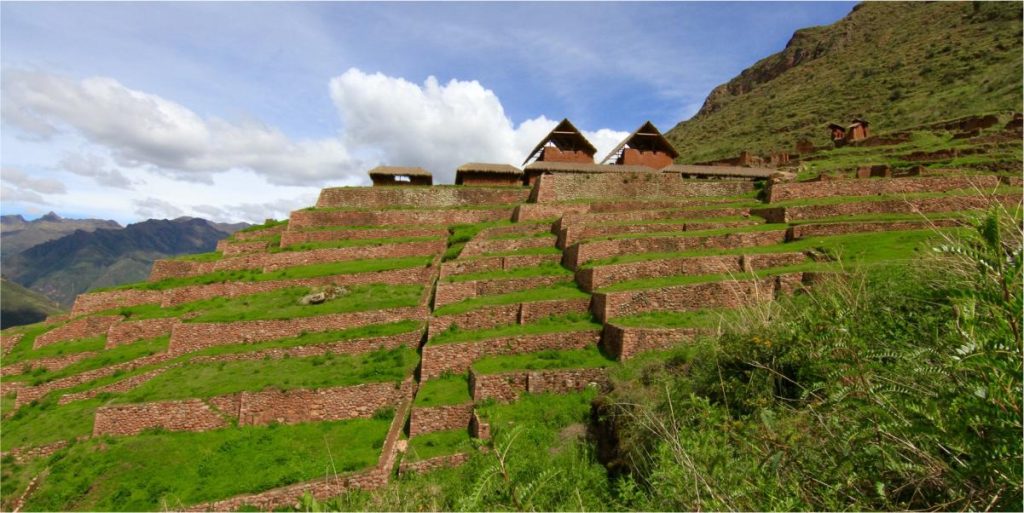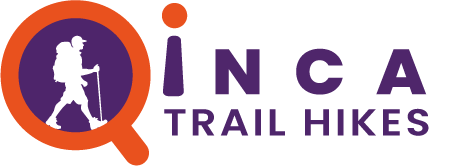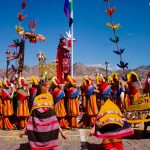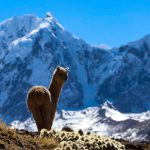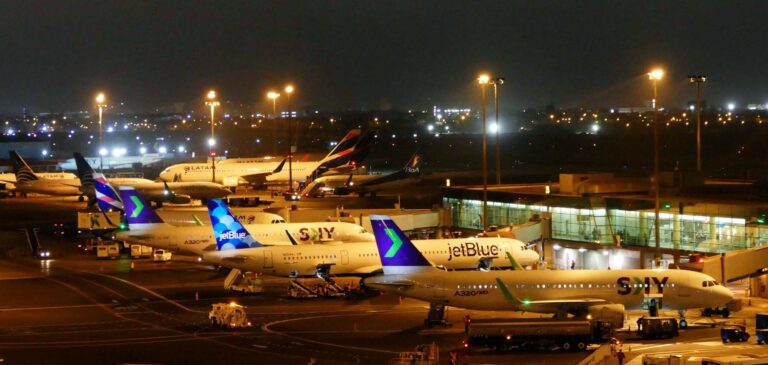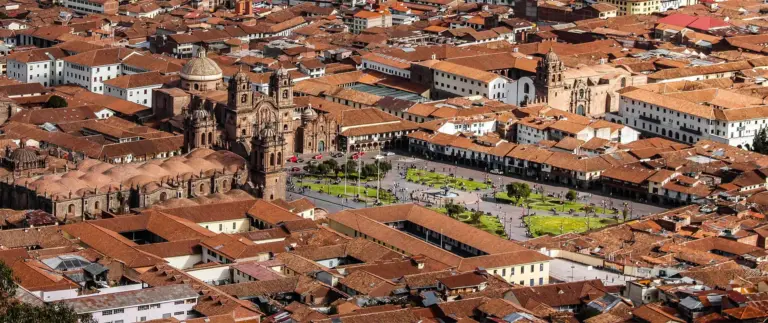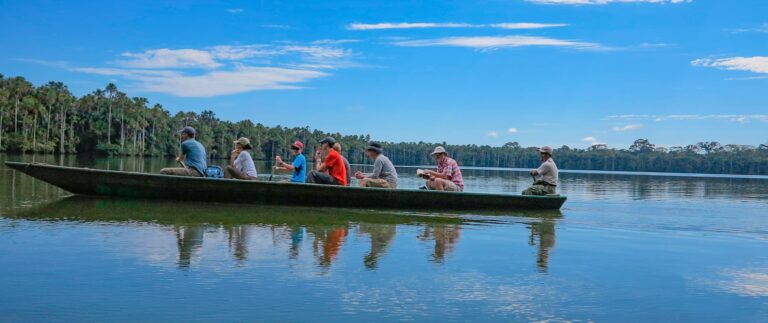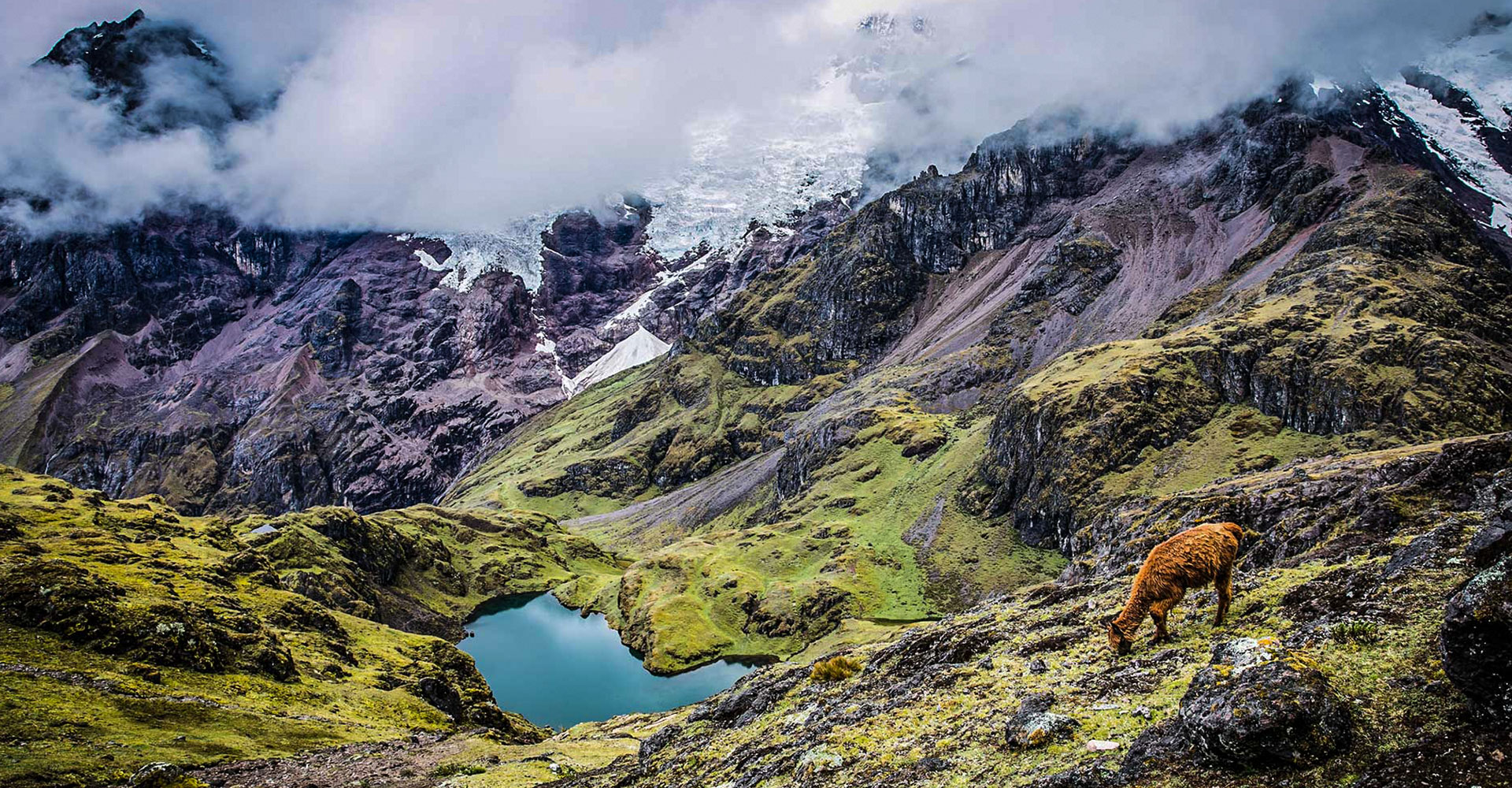
Every year thousands of adventurers make the trip to Machu Picchu via the world famous Inca Trail. Although it’s by far the most famous way to get to Machu Picchu not everyone can or wants to take this route. Whether it’s because there is no more availability or because you would rather take a less popular route, more nature filled hikes or one of the many alternatives hikes to the Inca Trail.
Alternative Treks to Machu Picchu
Salkantay Trail
The most popular trek after the Inca Trail, Salkantay is a nature lovers paradise. During the journey hike over mountain passes, enjoy alpine lakes, and descend into tranquil valleys. This hike is also less popular than the Inca Trail, consequently, there will be smaller crowds. It’s important to note however, that there is only one Inca Ruin on the Salkantay, Llactapata ruins. Depending on what type of trek you choose you may or may not visit Llactapata. If you are more of an archeological lover than a nature lover then maybe consider one of the other alternative hikes.
The Salkantay trail is perfect for hikers who love alpine settings.
Price Range
There’s a large variety of trekking options when talking about the Salkantay. It really depends on what you want in your adventure. Do you want a luxury hiking experience, or do you want the more classic backpackers hiking adventure? The prices range drastically from around $500 to upwards of $1000. If you are looking for a smaller guided trip or a completely private tour it will increase the price by a lot. You’ll also be able to find tours for under $500 but as the saying goes “You get what you pay for”.
Difficulty of the trek
The most difficult part of this hike is the altitude, being in the heart of the Andes it’s very important to acclimatize a few days in Cusco or the Sacred Valley before attempting this hike. Ranging from moderate to difficult this hike is not as difficult as some of the other hikes in the region such as Choquequirao or Ausangate. However, it is considered more strenuous than the Inca Trail.
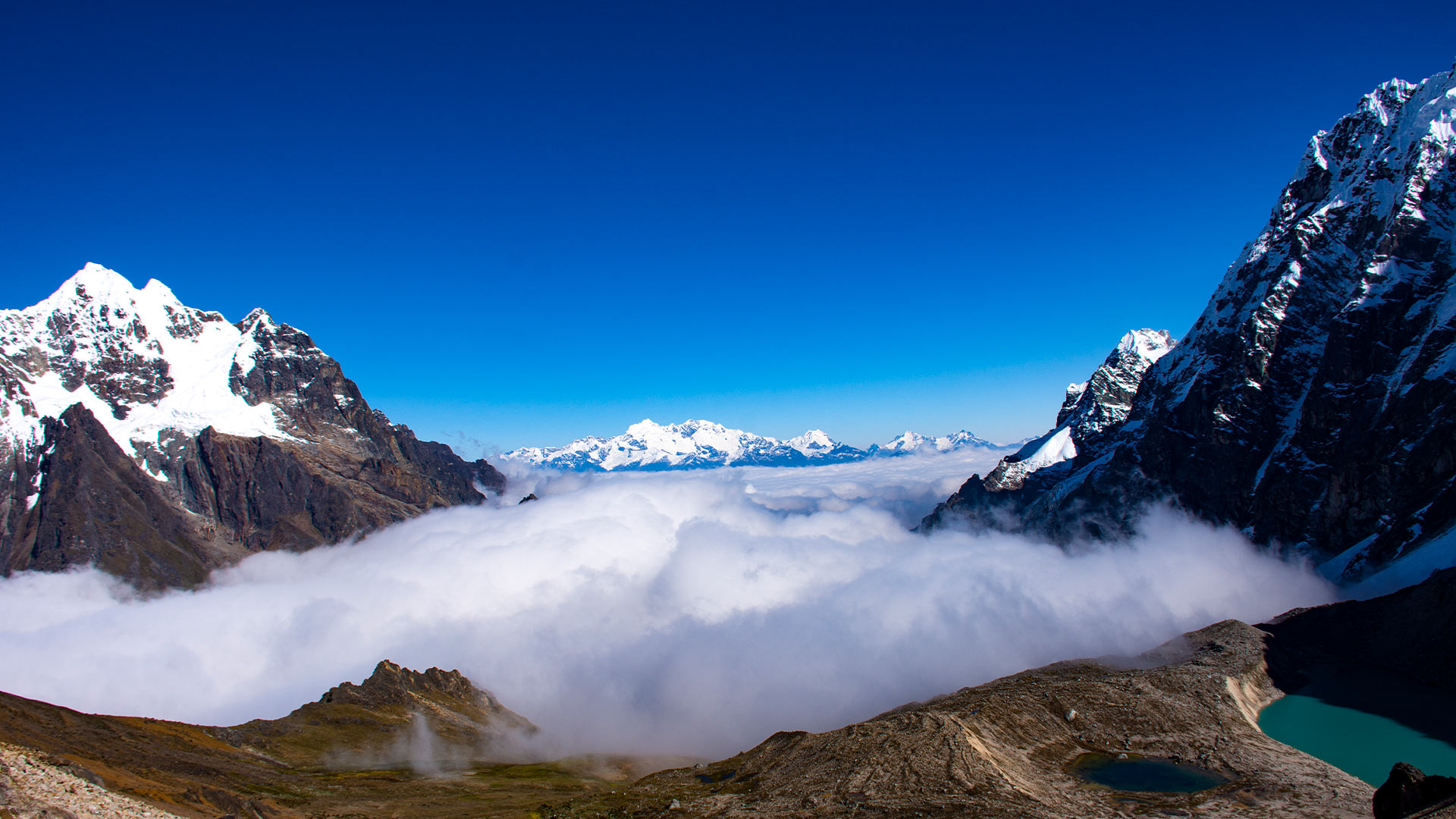
Salkantay trek to Machu Picchu 4 Days/ 3 nights
The Salkantay trek to Machu Picchu takes you through pristine mountain passes and through the Inca ruins of Llactapata where you get amazing views of Machu Picchu. A great way to get to Machu Picchu, this hike is for nature lovers.
Day 1: Cusco – Soraypampa – Salkantay Pampa – Humantay lake – Sorococcha
An early start this morning at 4.30am before the sunrises. The guide will collect you from the hotel and drive to the town of Soraypampa. Here at the trail head have a wonderful breakfast cooked specially by the private chef. Start your trek 2.5 hour round trip walk to Humantay Lake. Enjoy the tranquility and take many photos of this Sacred Lake. The spectacular blue and green colors will captivate you and leave a lasting impression for years.
After you have the finished admiring the colors of Humantay, trek back to the trailhead Soraypampa trailhead. From here hike to Sakantay Pampa and have a well deserved rest and each a delicious lunch. Later continue to the first campsite Sorococcha. Be greeted with with hot drinks and appetizers before dinner. The tents will be already setup when you arrive, make yourself comfortable and later enjoy your dinner.
- Meals included: Breakfast, lunch, afternoon tea time and dinner
- Accommodation: Camping facilities
- Distance: 12kms / 8 miles
- Difficulty: Challenging
Day 2: Sorococha – Apacheta Pass -Huayracmachay – Chaullay – Lucmabamba
Wake up to a fresh cup of coffee or tea and also a bowl of warm water to freshen up. When you are ready a wonderful hearty breakfast awaits to give fuel for the day ahead. Hit the trail going up to the Apacheta Pass that is 4650 meters. Take the time to enjoy the views of the three mountains of Humantay, Salkantay and Huayanay. Be inspired by the sheer granduer of these mountains. The guide will give you a explaination on the sacred mountains and the how important they are to the Andean people.
After the Apacheta Pass descend for around 2 hours before arriving at Huayracmachay, stop and rest here and later have lunch. Later descend and notice the climate changing from the rocky landscape of the Andes to the lush humid landscape of the Amazon Rainforest.
After arriving in Chaullay you’ll take a break, have a snack, then take local transportation to Lucmabamba where you’ll camp for the night.
- Meals included: Breakfast, lunch, afternoon tea time and dinner
- Accommodation: Camping facilities
- Distance: 18kms / 11 miles
- Difficulty: Moderate
Day 3: Lucmabamba – Llactapata – Hydroelectric – Aguas Calientes
The day will start again with a hot beverage and breakfast. Here you will start walking on a part of the Inca Trail. The original Inca trail is more than 30000 km of stone pathways that the Inca constructed. Walk for another 4 hours before arriving to Lucmabamba, here you will get the opportunity to roast, grind and prepare your own coffee.
With your coffee rush, trek forward to the Inca ruins of Llactapata. From this site get your first view of the the amazing view of Machu Picchu. The guide will give you the history of the ruins and enjoy the beautiful views of Machu Picchu in the distance.
From Llactapata descend for 2 hours to Hydroelectric Plant and have lunch, this will be the last meal that is prepared by the chefs. Say goodbye to the trekking staff and board a train to Aguas Calientes where you will have dinner. Check into your hotel and prepare yourself to see Machu Picchu the next day.
- Meals included: Breakfast, lunch and dinner
- Distance: 15kms / 9 miles
- Time: Approximately 9 hours
- Difficulty: Moderate
Day 4: Aguas Calientes – Machu Picchu – Cusco
Today is what you have been waiting for, the magical Machu Picchu. Wake up early and take one of the first buses to the gate of Machu Picchu. Be sure to have breakfast to have the energy for this wonderful day. Maybe even enjoy the sunrise. Have a guided tour with your guide for around 2 hours, see all the main sites and take many photos before taking the bus back down to Aguas Calientes.
Board the 1 hour and 45 minute Expedition train from Aguas Calientes to Ollantaytambo. During the train ride travel through the Sacred Valley of the Incas following the Urubamba river. Enjoy the relaxing ride and the beautiful views of this unique landscape. Upon arriving in Ollantaytambo your guide will have a private van ready to take you directly to your hotel. This marks the end of the adventure, but dont worry theres a lot to see in the Cusco region and Peru in general. Get some much needed rest in a comfortable bed and prepare yourself for the next adventure!
Example Itinerary: Orange Nation
5-Day Glamping Salkantay Trek to Machu Picchu
A uniquely customizable trip this hike is similar to the classic 4-day Salkantay trek but, with a few added sites of interest and a much more luxury experience with one more day added. On the second night stay in the village of Colpapampa. On the 3rd day take transport to the Hot Springs at Colcamayo before returning to the village to spend the night.
The route for day 4 is exactly the same as the Classic Salkantay trek. Visit the ruins of Llactapata and get great views of Machu Picchu from across the valley. From the ruins continue on the last leg of the hike to Hydroelectric Plant then taking a train to Aguas Calientes. Upon arriving in Aguas Calientes check in to your luxury hotel, El Mapi. In the morning take the bus to Machu Picchu and explore the Inca Citadel. The return trip will take you to Cusco through Ollantaytambo via the high end Vistadome train. Once in Ollantaytambo the private van will drive you directly to your hotel.
***PLEASE NOTE: The main difference when comparing this option to the classic Salkantay is that this is a full luxury experience. From hot showers and silk robes to pisco sours and nightly massages you really can’t beat this tour if your looking for the highest end Salkantay trek.
Example Itinerary: Glamping Peru
Salkantay Trek and Classic Inca Trail Hike 7 Days/6 nights
This is the most extensive treks available giving you both wilderness and Inca ruins on the Inca Trail. Seeing both nature and history make this trek perfect. On the third day leave the Salkantay Trail and start the Inca Trail. On the 4th day see the first Inca ruin of Paucarcancha.
One of the best things about this trek is that you get to hike the Salkantay and get to enter Machu Picchu through the Sun Gate or “Inti Punku”.
***PLEASE NOTE: On this trek you get the opportunity to enter Machu Picchu through the Sungate!
Information provided by Sam Travel
Lares Trail
What is unique about the Lares Trek?
Lares Trek to Machu Picchu offers a culturally immersive experience, one of the best in the Cusco region. On this trek you will not be passing Inca ruins but will get the opportunity to visit and interact with local Andean villages that still practice ancient Andean and Inca traditions. These kind locals love to share their traditions with tourists. You may have the opportunity to practices ancients weaving traditions.
The second easiest trek to Machu Picchu the Lares trek is the perfect option if you want a more relaxing adventure and a chance to practice your Quechua with the local Andean people. Additionally, it’s one of the most remote and least traveled treks to Machu Picchu. If you are looking for a hike without any crowds and want to be alone with your party, Lares is one of your best options. There are a few different packages to choose from and you can even combine Lares with the last section of the Inca Trail. After a few mountain passes upwards of 4000m have a the privilege of soaking in the therapeutic Lares mineral Hot Springs.
Extra money for souvenirs
It’s a good idea to bring some money to buy textiles and other traditional goods from the local people. Have the peace of mind knowing that your money is going directly to the person who raised and cared for the animals, harvested the wool, and wove the textiles. Because of the remoteness of these villages, donations are also greatly appreciated. A lot of the people and children living here do not have access to a wide range of nutrients, consequently, many of the people here are malnourished. Something as simple as fresh fruit and vegetables, or even toys or childrens clothes or writing supplies could go a long way.
The Lares trek is the perfect trail for anyone looking to experience authentic Andean culture.
Price Range
The price range like all the hikes varies drastically depending on what type of adventure you want. However generally, it’s between $450 to $780. It also depends heavily on which tour operator you chose. Some operators are more ethical than others paying their employees a livable fair wage while others take advantage of their employees. Additionally, the size of the tour also affects the price, tour company that guide smaller more intimate groups will generally be bit more expensive. However you will get more one on one time with your guide and can ask them more questions which will make for a more educational experience.
Difficulty Rating
The Lares Trek to Machu Picchu is one of the easiest alternative hikes to the Inca Trail or the Salkantay Trek. There are some high mountain passes but if you pace yourself it really should not be a problem. The only concern is that you may get altitude sickness if you haven’t properly acclimatized to the altitude beforehand. With that being said you’re still hiking in the mountains and need to be in at least decent physical shape. It’s not quite a walk in the park but more a walk in high altitude.
Itinerary
Day 1: Cusco – Huaran – Cancha Cancha
The trek will start with an early morning pickup from your hotel in Cusco around 5am. Travel to the Sacred Valley and the Pisaq ruins, explore and later have breakfast at the Pisac Guest house. After breakfast continue on to Huaran. Here we get ready and pack the animals for the start of the the hike.
The first leg of the journey is a 3 hour hike to the remote village of Cancha Cancha around the halfway point stop for lunch. Cancha Cancha is one of the most remote and isolated villages in the region with no roads leading to it and only recently getting electricity, in 2019. This village is completely self sustaining and has been practicing the same traditions and customs for hundreds of years.
After settling into camp have the unique opportunity to visit a local Andean family where they will share with you their way of life. Next sit with your fellow hikers to a delicious dinner prepared by your private chef. After dinner, listen as you guide explains the Inca constellations which helped the Inca and the current Andean people with their agricultural practices.
- Meals included: Breakfast – Lunch – Afternoon Tea Time – Dinner
- Accommodation: Camping facilities with bathroom building
- Distance: 9kms / 5.6 miles
- Time: 3.5hrs approximately
- Difficulty: Moderate
Day 2: Cancha Cancha – Quiswarani
Wake up with either tea or coffee and a bowl of hot water to freshen up. After getting up eat breakfast with your fellow hikers. Get ready for a long day around 7 hours to the next campsite. The day starts off fairly difficult with a few high mountain passes and the highest part of the trek Pachacutec pass (4,500m /14,800 ft). Rest for a bit at the top of Pachacutec pass. Have a snack and take the opportunity to admire the incredible mountain landscape. With glaciers covering the mountain peaks, alpacas and llamas grazing in the valleys below and various other Andean fauna, the view is absolutely breathtaking.
After conquering Pachacutec Pass continue on the trail for about 3 hours until finally reaching the first campsite at Quiswarani (3,700m/12,139ft). Along the way see and interact with Andean sheperds and their livestock. Your guide will teach you a few Quechua phrases and act as your interpreter. Know you’re close to the campsite when you reach the Seven Waterfalls just before Quiswarani.
The camp will be all set up by the time you arrive, enjoy some hot beverages and eat a filling delicious dinner. After dinner try and get a good night’s rest so you’re ready for the next day of hiking.
- Meals included: Breakfast – Lunch – Afternoon Tea Time – Dinner
- Accommodation: Camping facilities with bathroom building
- Distance: 12kms / 7.5 miles
- Time: 7hrs approximately
- Difficulty: challenging
Day 3: Quiswarani – Cuncani – Lares – Ollantaytambo – Aguas Calientes
Just as the days before wake with hot beverages and warm water to freshen up, then have a delicious breakfast. Considered the most picturesque day of the hike, start the hike with a short 3 hour walk to Willqaqasa Pass (4,200m/13,779ft). At the summit have views of the Colquecruz and Pitusiray Mountains. Continue on the trail and descend into the Puna Grasslands an immense region expaning vast valleys that seem to go on forever. After about 2 hours come to the remote Cucani village. Depending on the year you may get the chance to visit the small school, interact with the children, give gifts, and play soccer!
Continuing on from Cuncani take a private van to the Lares Hot Springs. Get your swimmies on and take a much needed soak in the mineral waters of these volcanic hot springs. Relax and eat lunch, the last meal prepared by your wonderful private chefs. Say goodbye and give thanks to the chefs and horsemen. After the relaxing soak and lunch, take another ride to Ollantaytambo approximately 2.5 hours. In Ollantaytambo have dinner at one of the local restaurants. From Ollantaytambo take the Expedition train to Aguas Calientes where you will check in to your hotel and stay the night.
- Meals included: Breakfast – Lunch – Afternoon Tea – Dinner
- 2* Accommodation: Ferre Hotel or similar
- Distance: 15kms / 9.3 miles
- Time: 6 hrs approximately
- Difficulty: Moderate
Day 4: Aguas Calientes – Machu Picchu – Cusco
Get an early breakfast in your hotel and take the first bus to Machu Picchu so you can catch the magnificent sunrise. Once you arrive at Machu Picchu, have the 2 hour guided tour lead by your expert bilingual guide. Ask your guide all the questions you can think of as Machu Picchu is full of history and unexplained mysteries.
When you’re done exploring Machu Picchu take the bus or walk back to Aguas Calientes. Depending on your train’s departure time you may have the opportunity to explore the town of Aguas Calientes and take a soak in the Aguas Calientes hot springs. Eventually take the train back to Ollantaytambo through the scenic Sacred Valley of the Incas. From Ollantaytambo travel back to Cusco through the Sacred Valley to your hotel around 7:00 pm.
- Meal included: Breakfast
- Difficulty: Easy
Example Itinerary: Spider Travel Peru
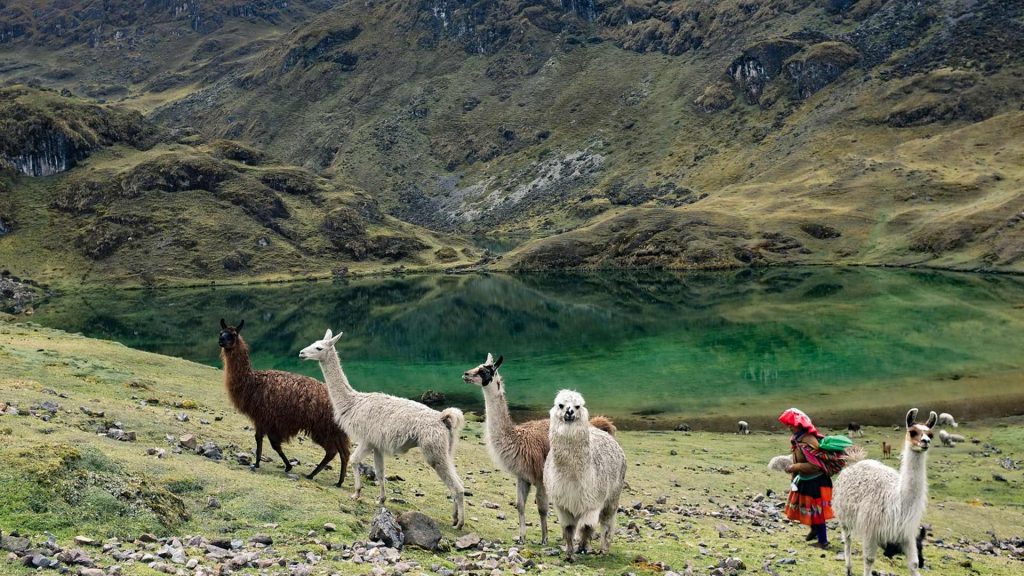
Inca Jungle Trek
What makes The Inca Jungle Trail Unique?
The Inca Jungle Trek is the most adventurous hike offered in the region! You’ll get to mountain bike, white water raft, and trek all the way to Machu picchu.
A unique way to get to Machu Picchu The Inca Jungle trek is for adrenaline junkies. If your an avid mountain biker or someone who likes to white water raft this is the hike for you. On top of it all, get the chance to explore a few Inca ruins all the while traveling through different micro climates such as the Andean Cloud Forests, high rainforest, and the Urubamba Valley. Start the adventure at 4350m on your mountain bikes and ride down from the Andean Cloud Forest to the Urubamba Valley. Climb into the rafts once you get to the Urubamba River and float down the river until coming to the remote lodge where eat dinner and stay the night.
You might be a bit sore from all the biking and rafting but don’t worry because you have the chance to soak in the hotsprings of Colcamayo. The first views of Machu Picchu will be at the remote ruins of Llactapata where you can get great pictures with Machu Picchu in the background before finally visiting the Inca Citadel of Machu Picchu with an expertly guided tour.
Price Range
Prices generally range from $450 to $800 depending on which tour operator. Things that may or may not be included vary from one company to the next. For example, meals may not be included every day, or entrance tickets to Machu Picchu. Some companies may not offer the lodging in their price. Additionally, it’s important to consider your safety. How professional and serious is the company you’re choosing? Some companies may sacrifice safety equipment or maintenance of rafts and bike equipment in order to save on costs. Because of these factors and others it’s very important to look through each companies itinerary thoroughly and clarify any questions you may have.
***PLEASE NOTE: Entrance to Colcamayo hot springs is optional and will cost an additional 10 soles per person.
Important Weather Information
Unlike most of the other treks, the Inca Jungle trek is heavily dependant on weather conditions. During the rainiest months of the year, January and February, the trek is not available due to heavy rains. Check in with your tour company beforehand to ensure the trek is being offered.
Difficulty rating
A demanding and strenuous trek, the Inca Jungle involves extreme sports at high altitudes. You’ll need to be in good to great physical shape and acclimatize for a few days in order to complete this journey. Even if you are fit altitude sickness can affect you, that’s why it’s very important to acclimatize in Cusco or the Sacred Valley for a few days before trying this or any other treks in the region.
Example Itinerary: Inca Jungle to Machu Picchu
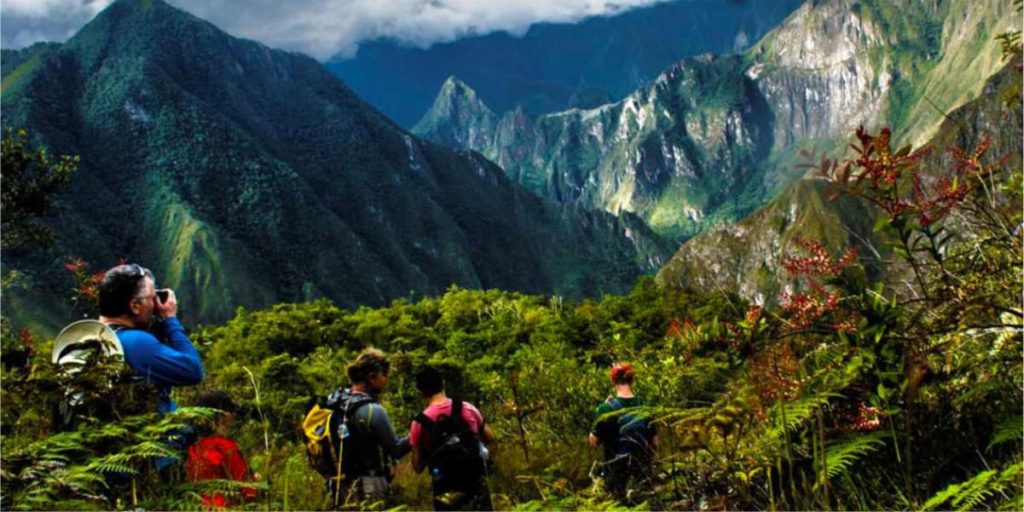
Choquequirao Trek
What makes Choquequirao Trek unique and special?
The only way to visit the immense and largely unexcavated site of Choquequirao is on foot. There are no roads trails or any other ways to get to the Inca ruins. If you are interested in exploring ruins that rival even Machu Picchu, you must set out on the Choquequirao Trek.
Only experienced hikers can complete this hike solo. It’s possible to attempt the hike with a guided tour if you’re are a novice however, you must be in good to great physical condition. During this adventure you’ll be hiking through dense jungle ascending and descending multiple times each day.
A less know ruin complex when compared to Machu Picchu, Choquequirao is often forgot about when tourists plan their trips to the Cusco region. Surrounded by huge mountains and thick lush jungle Choquequirao’s remote location means less crowds especially when compared to the zoo that is Machu Picchu. On average Choquequirao has only 25 daily visitors where as Machu Picchu has 5000! Because of this, it’s very possible you won’t see a single soul while on the trail and even at the complex itself! A truly stunning complex, Choquequirao spans a huge area and only about 30% has been excavated. There are still many discoveries to be made and mysteries to be solved!
Difficulty rating
This hike is considered very difficult and is one of if not the most strenuous hikes in the region. If you are hoping there will be a rest day, think again! Every single day will be a challenge, descend into valleys as low as 1400m (4593ft) and then go back up to 4660 (15,290 feet) and back down again. Unlike Rainbow Mountain, the altitude is not necessarily the problem. The difficulty comes from the daily up and down of this trek. Very demanding on the legs and knees, it’s highly recommended to bring trekking poles especially for the down hills that you will encounter every single day. Although this is a very difficult hike, it is very rewarding and absolutely worth the effort.
Example Itinerary: ORANGE NATION
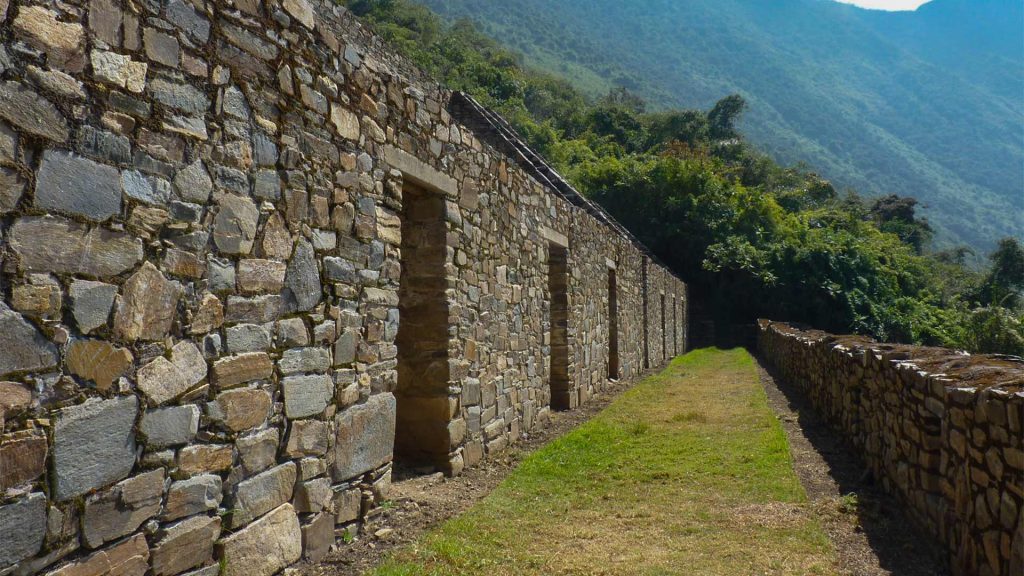
Huchuy Qosqo trek
What makes the Huchuy Qosqo Trek Unique
The Huchuy Qosqo trek is the easiest way to hike to Machu Picchu. it’s the shortest and has the most forgiving approach totaling just 17km
If you are limited on time or you don’t like the idea of a difficult multi day trek then this is the best option for you. This is also the only hike that offers a visit to the Incan ruins of Huchyuy Qosqo which means “little Cusco” in Quechua. Journey through small remote Andean villages. Some tour operators even offer the opportunity to stay the night in one of the villagers homes. Don’t worry there will be hot water, electricity, and comfortable beds.
Difficulty of the trek
Huchyuy Qosqo is the easiest trek to Machu Picchu by a long shot. It’s a short 17 km and the elevation is fairly low for the region only 3650m (11980ft). Please make sure you acclimatize for a few days before attempting this or any other treks. Even though this hike is not as high most of the others, altitude sickness is still a concern if you are new to the region.
